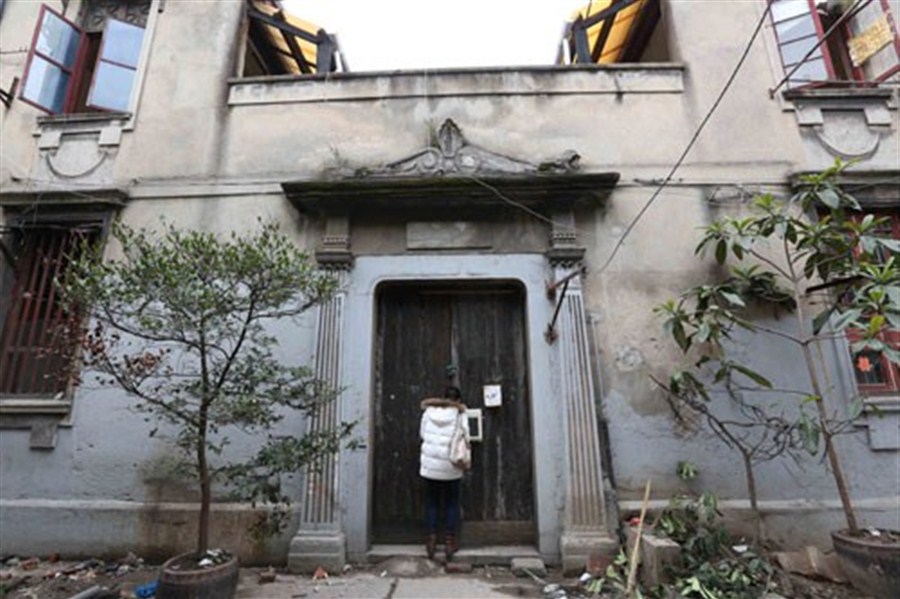
A woman peeks through the door of a former “comfort house” in Hongkou District that was used to house sex slaves for the Japanese military during World War II. — Wang Rongjiang
A building that once housed sex slaves during one of the darkest periods of the last century is still standing — but it faces an uncertain future.
The Hongkou District government yesterday suspended the demolition of the two-story wood and brick structure on Gongping Road that was once a major brothel where Japanese troops abused “comfort women” in the 1930s and 40s.
It was scheduled to be demolished along with other shabby apartment buildings in the area after local residents asked to be relocated to better accommodation.
The government said it will seek advice from the local cultural heritage authority to determine whether the building should be preserved.
“Experts will be invited to collect valuable cultural relics inside and record information about the house for posterity,” the government said in a statement.
Known as the House of Sea, it catered to high-ranking Japanese naval officers and marines from 1939 through the end of WWII in 1945, said Su Zhiliang, a history professor at Shanghai Normal University.
The gate has been locked and most of the interior wooden fittings have already been removed, but the structure itself is still intact.
Wood debris and broken stairs are piled in the courtyard of the house, which stands amid half-demolished residential buildings.
The 17-room comfort house, which was established and operated by a Japanese naval veteran named Sakashita Kumazo, imprisoned 40 women — 20 Chinese and 20 from Japan and Korea, said Su.
Kumazo’s son, who helped run it in 1944 and 1945, made a visit to the city in 1991 to come to terms with his guilt.
He said the building was well-preserved, looking exactly the same as it had a half century before.
He later wrote a book about the house, confessing that terrible crimes were perpetrated inside, including several comfort women being tortured to death.
“The building should be preserved since there is ample evidence to prove it was once used as a comfort house,” Su told Shanghai Daily.
He said the government should turn it into a community center with one of the rooms serving as a grim reminder of the building’s sordid history.









